IMPRESSIONS FROM TEXAS: Houston Ballet's "Bespoke" and Ballet Austin's "POE/ A Tale of Madness"
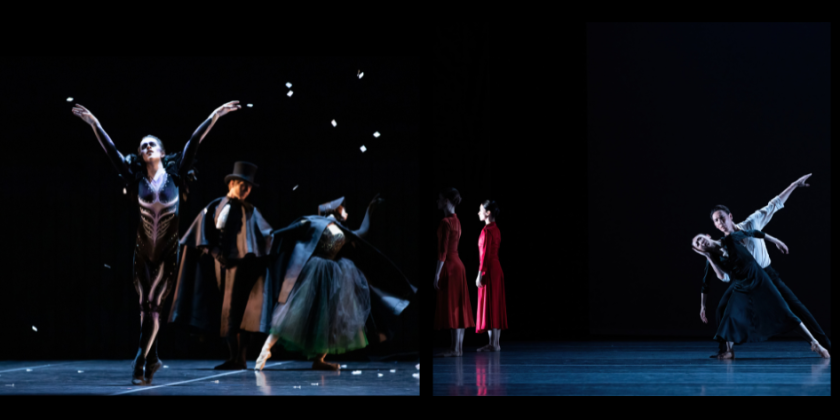
Houston Ballet in Bespoke
When: March 7 – 17, 2024
Where: Wortham Theater Center – Brown Theater, Houston, Texas
Who: Houston Ballet Orchestra conducted by Simon Thew
Bespoke (Houston Ballet Premiere) | Choreography: Stanton Welch AM | Music: Johann Sebastian Bach (Denise Tarrant, Violin)
Overgrown Path (Houston Ballet Premiere) | Choreography: Jiří Kylián | Music: Leoš Janácek (Katherine Burkwall-Ciscon, Piano)
Filigree and Shadow | Choreography: Tim Harbour | Music: 48nord (Ulrich Müller and Siegfried Rössert)
Ballet Austin in POE
When: March 22 - 24, 2024
Where: The Long Center, Austin, Texas
Stephen Mills' Poe / A Tale of Madness
Concept and Choreography: Stephen Mills | Music: Graham Reynolds (Commissioned) | Libretto: Shawn Sides | Set Design: Michael B. Raiford | Costume Design: Margaret Mitchell | Lighting Design: Tony Tucci & Erin Earle Fleming | Hair and Makeup: Wendy Sanders | Live Accompaniment: Austin Symphony Orchestra
When I saw Houston Ballet in Fall for Dance at New York City Center last October, I was impressed by the dancers’ fine technique and exuberant execution. They performed Clear by choreographer Stanton Welch, who has been the troupe’s artistic director since 2003.
Now two artistic directors lead the company: Julie Kent, who recently joined Welch after vacating the directorship at Washington Ballet, danced for over twenty years as a principal at American Ballet Theatre.
Bespoke, a work Welch originally choreographed for San Francisco Ballet, opened the March 15th program receiving its Houston Ballet premiere. Its title also headed the evening’s triple bill.
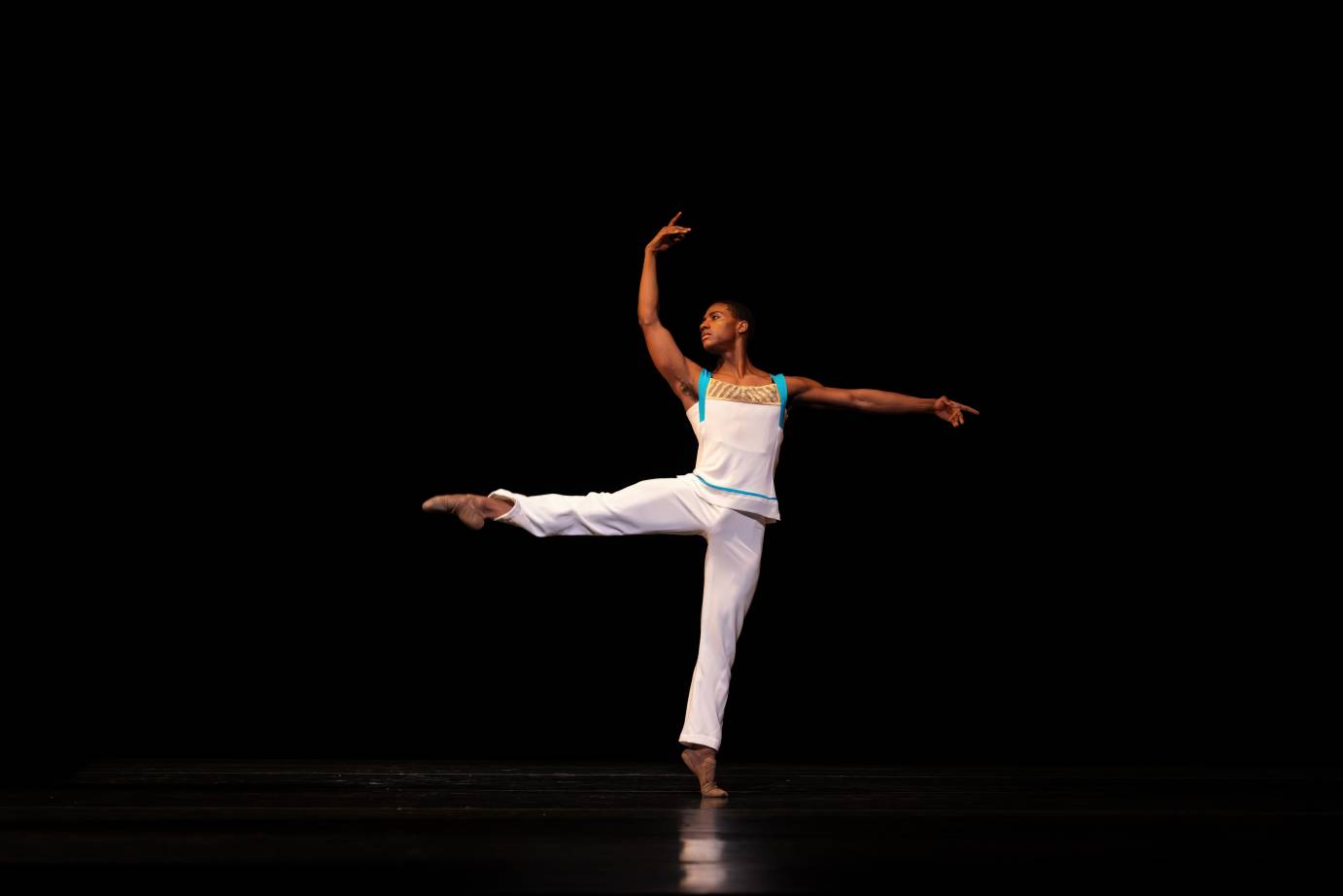
Houston Ballet soloist Eric Best in Stanton Welch's Bespoke. Photo: Amitava Sarkar
A single male dancer moves in silence before the sounds of a violin concerto by Bach fills the air, and a cast of twelve dancers inhabits the space. Do the arm movements represent the ticking of a clock? A dance career is finite, but this dance goes on ever so happily. Bright smiles belie the hard work, and the mostly frontal presentation let one delight in the technical accomplishment of the ensemble. Yet because of its presentational nature there is a lack of wonderment.
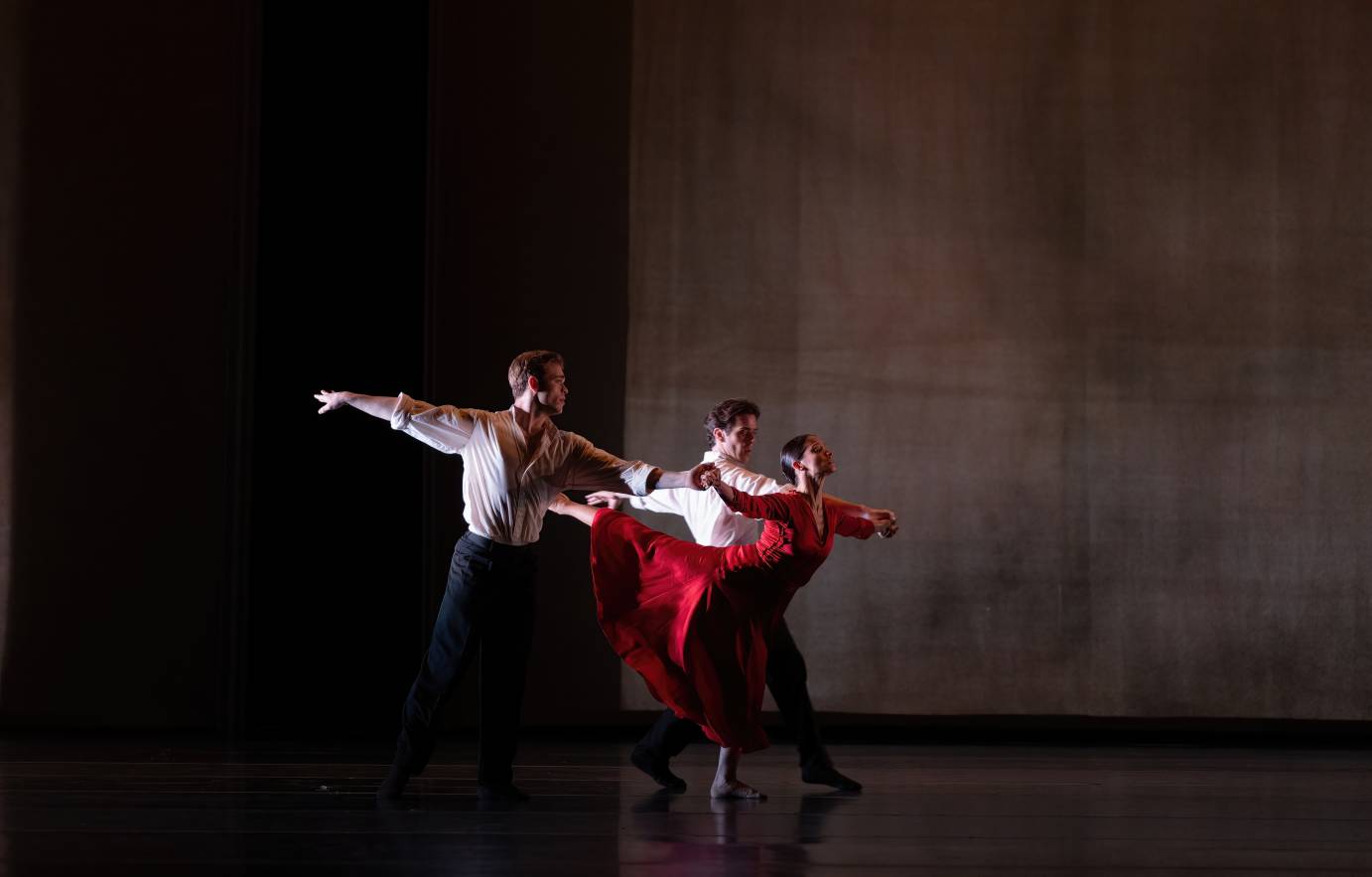
Houston Ballet principals Karina González and Connor Walsh with demi soloist Jack Wolff in Jiří Kylián's Overgrown Path. Photo: Amitava Sarkar
Wondrous mystery could be an alternate title of Jiří Kylián’s 1980 Overgrown Path, his homage to revered master choreographer Antony Tudor. Janácek’s piano pieces that make up the score were written after the death of his beloved daughter. The idea of a grieving community looking for solace was central in Tudor’s Dark Elegies, and Kylián picks up the thread. A group of dancers faces dim-lustered light emanating from one side of the stage. Memories and uncertainty extend the stage space into a vast, yet intimate world. Watching one pas de deux I get the feeling that I am peeking at the couple through a back window, since they mostly face away from the audience. By letting us look at bodies from different angles, Overgrown Path evokes emotion and subtly draws in the onlooker as a mesmerized participant.
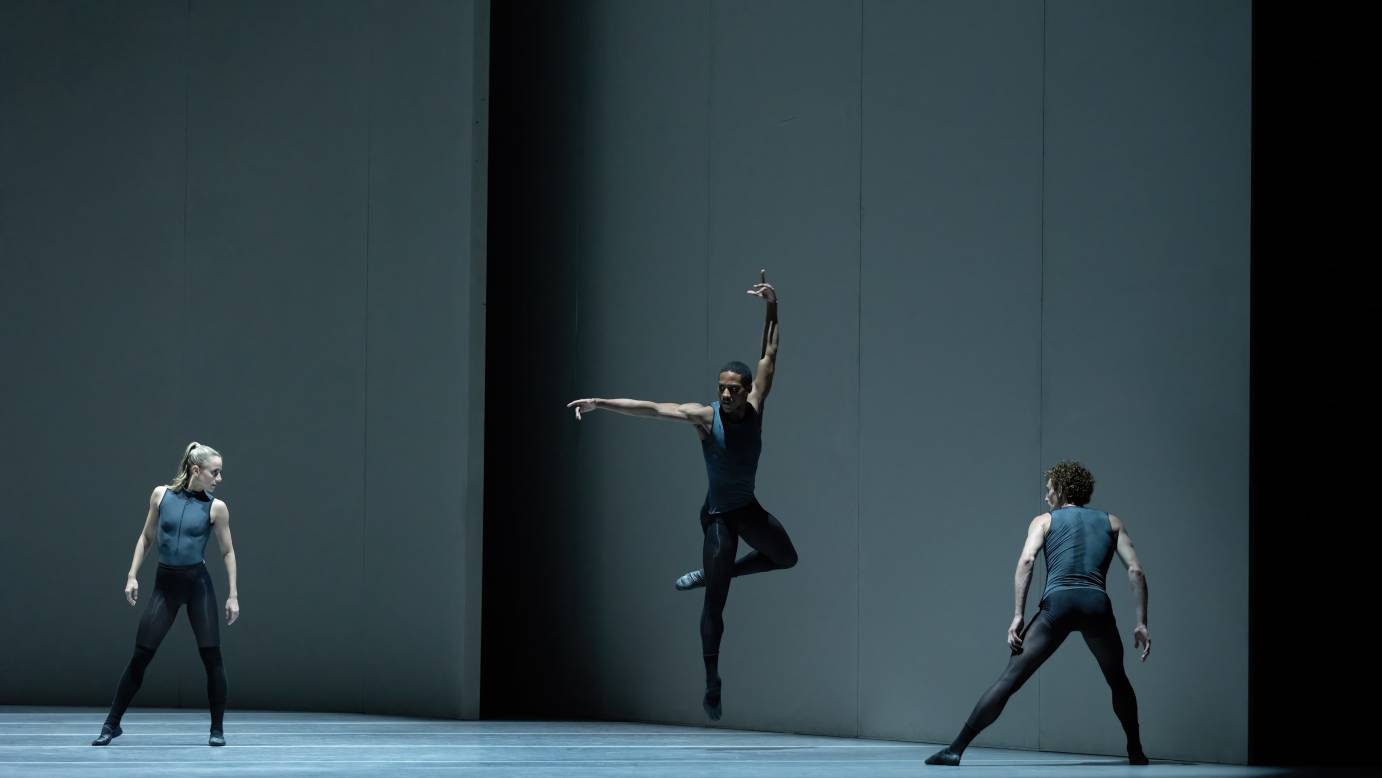
Houston Ballet's first soloist Tyler Donatelli, soloist Eric Best and principal Skylar Campbell in Tim Harbour's Filigree and Shadow. Photo: Amitava Sarkar
How satisfying to experience the dancers’ commitment to this soulful movement vocabulary. Fiona Lummis and Roslyn Anderson staged the work and are credited as assistants to the choreographer. A handsome arched scenic design by Kelvin Ho that diminishes the stage space turns out to be the most interesting aspect of Filigree and Shadow, a 2015 work by Tim Harbour that entered the company’s repertory in 2018. Daredevil partnering thrillingly forces the dancers to concentrate on the movement itself for a moment. With the feat accomplished they return to smiling at the audience as if to ask for applause. I doubt that is what the choreographer intends, but too often the flow of movement is broken for a "Star Search" effect.
No doubt these dancers are as fine as any. What they need is direction. I look forward to seeing which way they will be pulled.
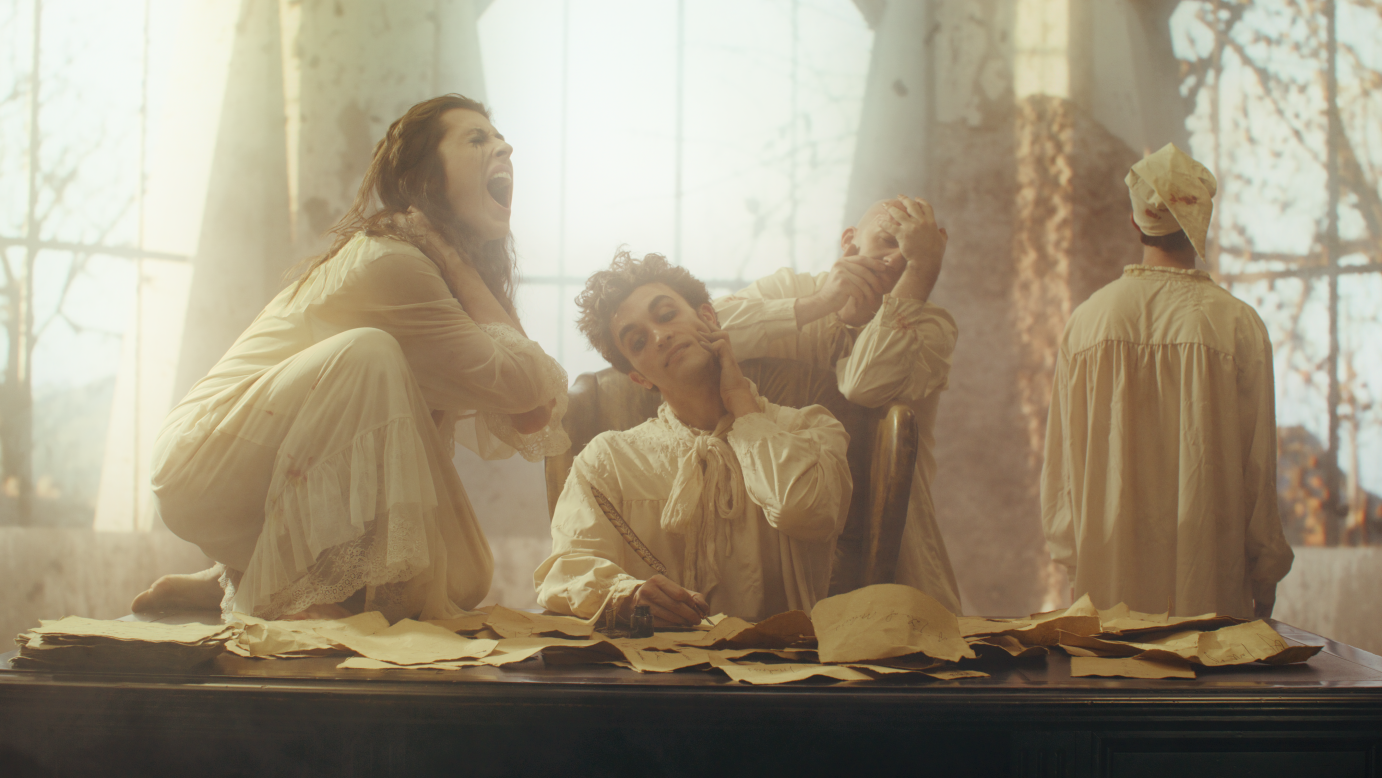
Ballet Austin’s long-time director Stephen Mills has challenged himself and his company with a huge collaborative effort named POE / A Tale of Madness, seen March 22 at the Long Center. By not just focusing on one story but blending elements of five Edgar Allan Poe works, the stage is transformed into a hallucinatory nightmare. Scenic designer Michael B. Raiford incorporates 25 hospital beds on wheels into the sinister vision in which coffins, Poe’s departed mother (danced by Katherine Deuitch), and a cast of dancers clad in romantic tutus pop out of the woodwork. One briefly thinks of Giselle, the gothic ballet first performed during Poe’s lifetime. But the title character, danced by Paul Martin, has to deal with an alter ego, the Imp of the Perverse, portrayed by James Fuller; and, of course, there is a Raven, for those who only know one thing about the author who inspired this macabre monument to the occult. Ian J. Bethany as the Raven has a beautiful movement quality, and owns the space with his light-footed runs. Most impressive and dangerously alluring is Edward Carr as Death. His elegant frock moves ominously about him, while his shapes possess a clarity that draw one’s eyes. Carr seems deeply invested in the material, and his proprioception makes one curious about the wisdom an afterlife might hold.
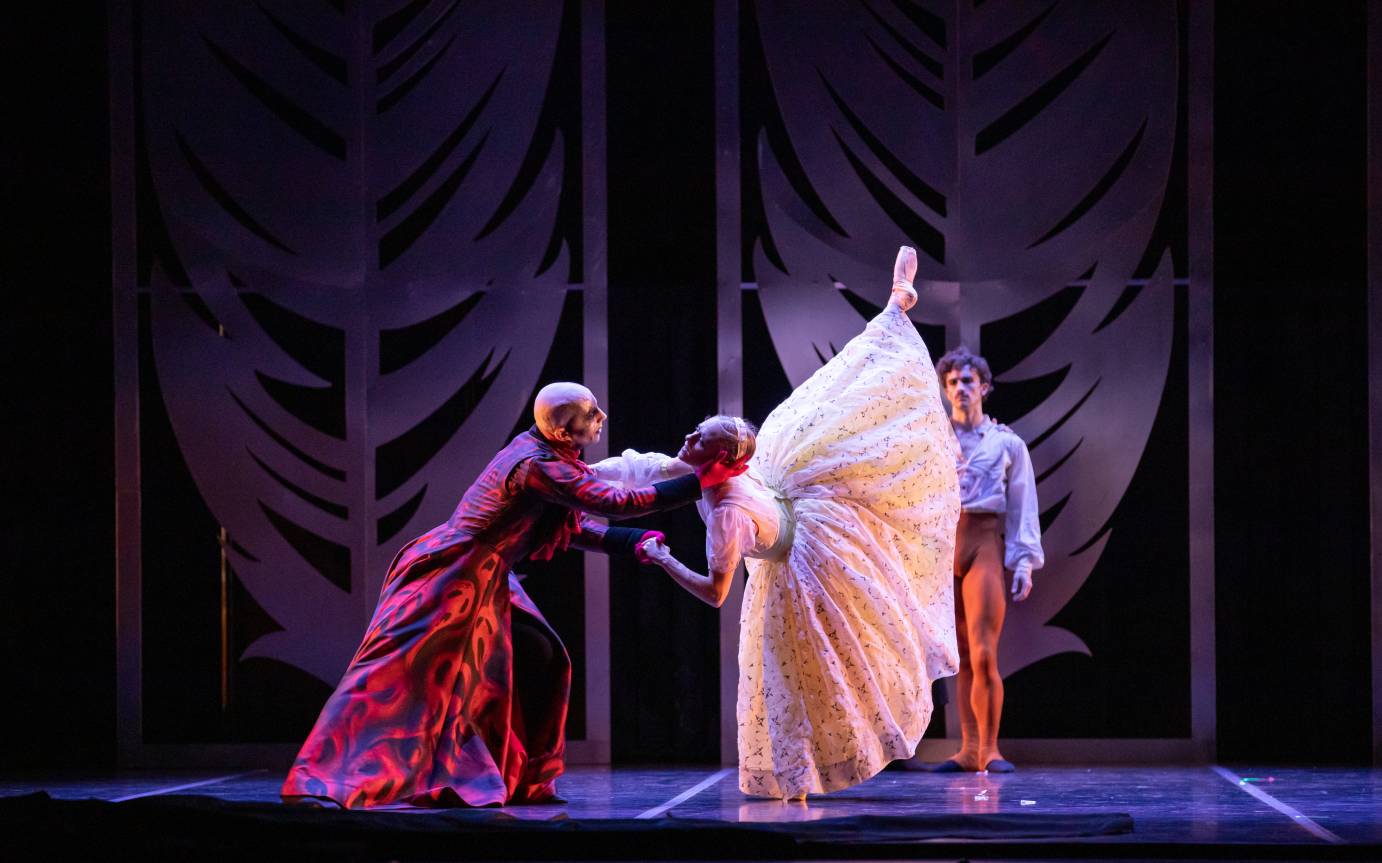
Understandably, on opening night not everyone has Carr’s level of ownership in his role. While the action moves from Poe trying to impress literati to showing his love for his bride, Sissy (Grace Morton), and from his impoverished home to the swanky Folio Club, the maximalism of the production sweeps one along no matter how obtuse the story. Yet some passages are overlong, such as when a piece of cloth is turned over and around, in every which way, repeatedly without a clear purpose and past its initially poetic imagery.

Ballet Austin's POE/ A Tale of Madness. Photo: Anne Marie Bloodgood
Plenty of beautiful pictures and haunting images stay with me, though, in the end, too many of the characters blur in my mind. Could the dancers have a greater hunger for space? Could they be given more distinct movement vocabulary, or at least a distinct way of divulging what they are about? This ballet makes me long for Antony Tudor’s finesse and efficiency in revealing a character simply by his gait or posture. Mills comes across as a strong artistic director, but less so as a choreographer.
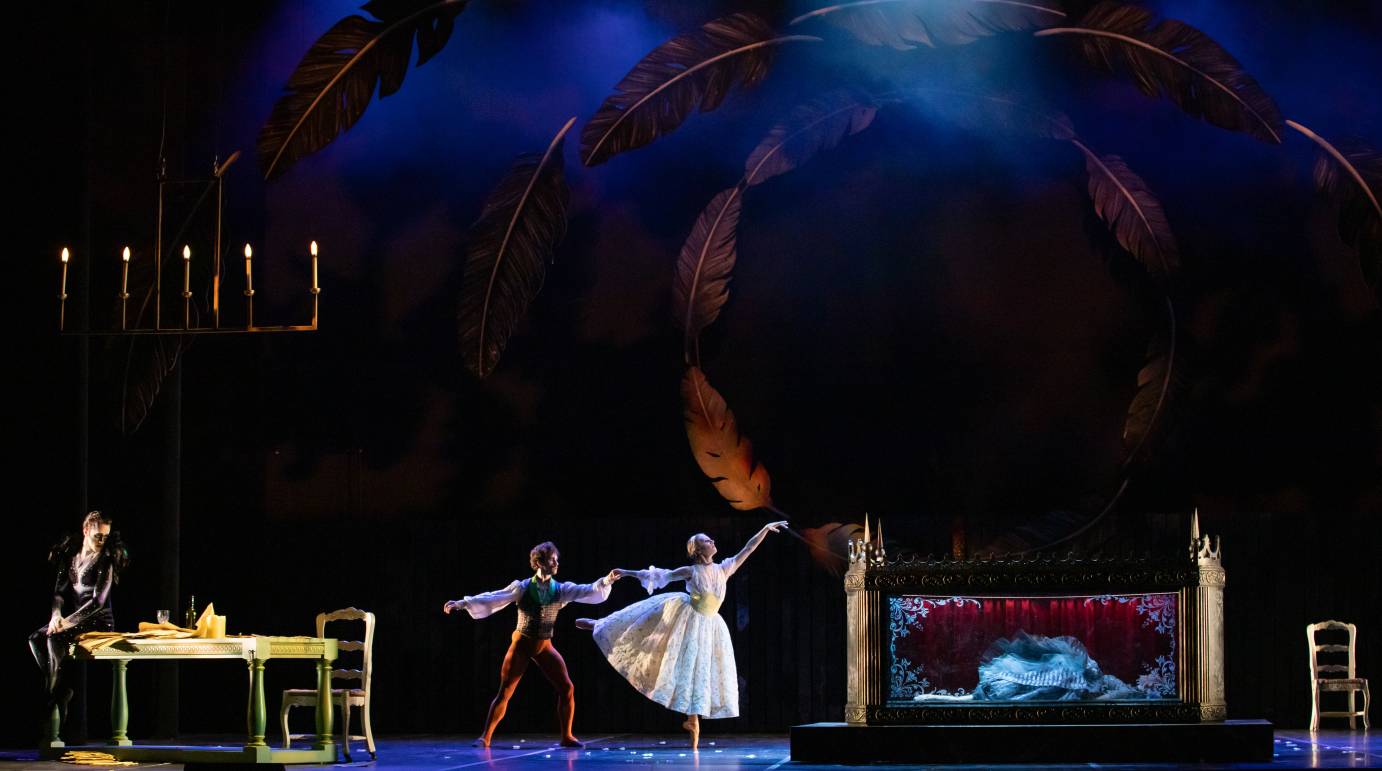
Nonetheless, POE represents tremendous teamwork by Mills, who devised the concept, and composer Graham Reynolds, who came up with an interesting score that is easy to listen to, yet far beyond “easy listening,” played live by the Austin Symphony Orchestra under conductor Peter Bay. Set designer Michael B. Raiford works wonders, and changes the scenes seamlessly with the expertise of lighting designers Tony Tucci and Erin Earle Fleming. While not every costume is as effective as Death’s frock, costume designer Margaret Mitchell deserves special mention. As grandiose as POE is, I hope Mills finds the time to rework and discover movement with the dancers that fits the scale of this spectacle. Then it could be a dance to die for.














